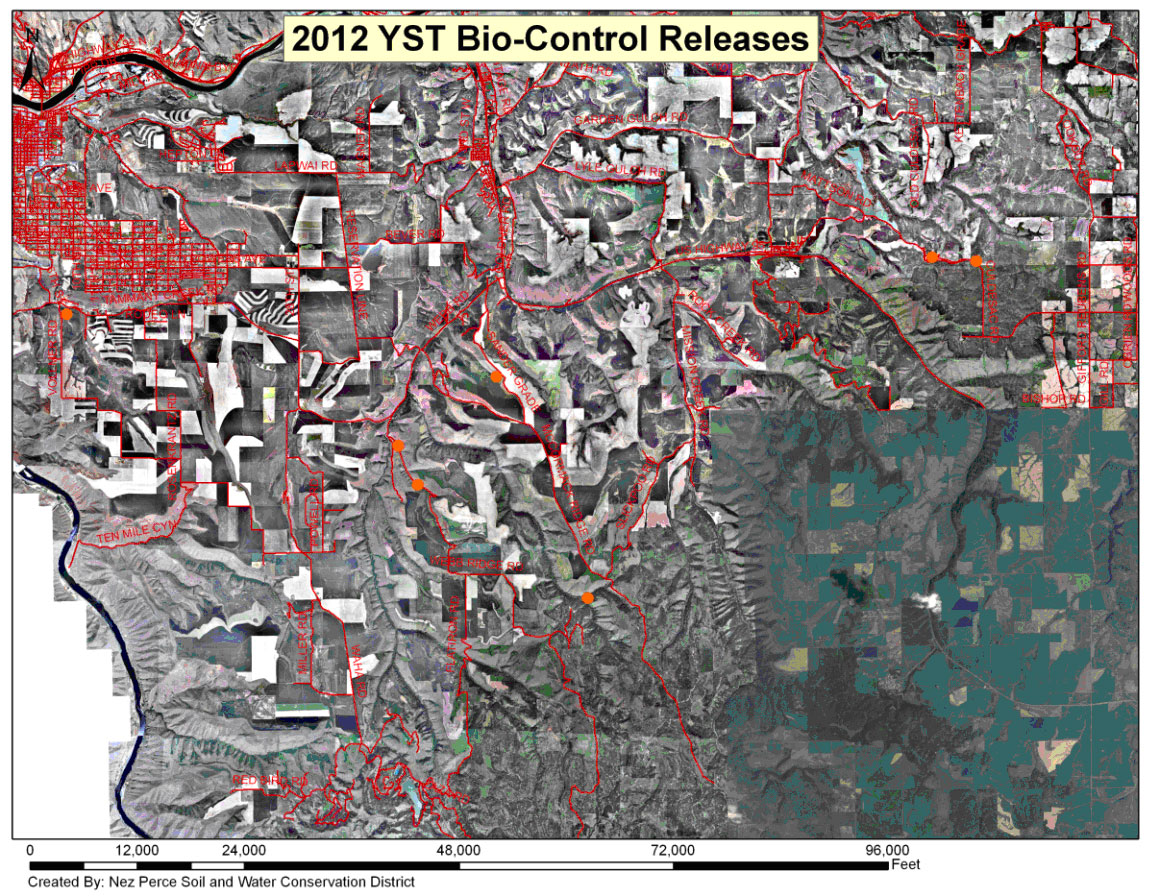Yellow Starthistle is prevalent within Nez Perce County’s rangelands, roadsides, pastures, recreation lands, and cropland.
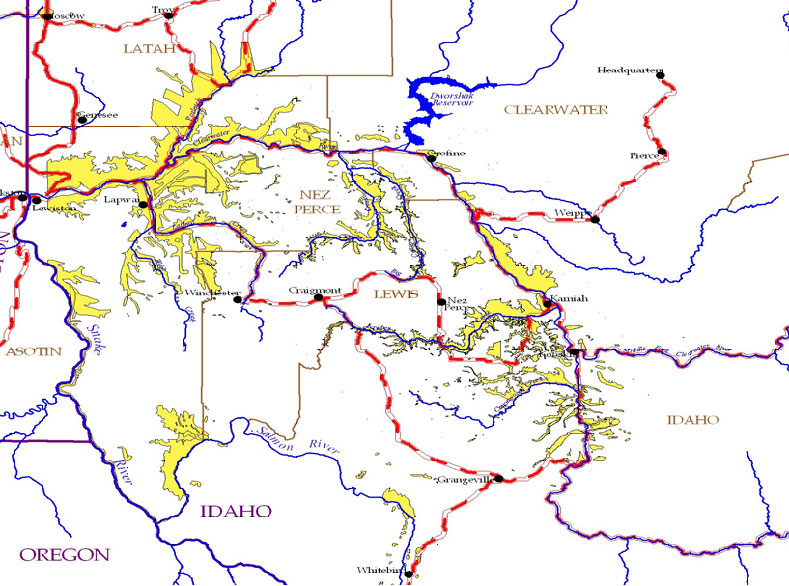
Figure 1. Yellow Starthistle Distribution in Nez Perce County. Yellow shaded areas show distribution areas.
CONTROL
Since 2002, the District has assisted landowners in releasing bio-control agents to control yellow star thistle. Early releases were randomly placed throughout the county. In 2005, a coordinated approach was developed which identify target release areas within the Big Canyon and Lapwai watersheds. The goal of this effort was to ensure that there was a sufficient population of the insects to provide a sustainable control level. Beginning at the lowest elevation in the watershed, the insects were released approximately every mile along drainage corridors.
There are three insects approved for release in the State of Idaho. Of these the District focuses on the release of the hairy weevil, Eustenopus villosus, which attacks the seed heads resulting in 90 to 100% reduction of seed production. The insects emerge in late May and persist until August of each year. The weevil lays its eggs in the seed head. As the insects hatch they feed on the developing seeds. Releases consist of 300 insects per site. District staff collects the insects the last week of June each year and relocates them to areas of heavy yellow star thistle infestations. Releases follow the United States Department of Agriculture’s Biology and Biological Control of Yellow Starthistle protocol.
Yellow Starthistle Insect Distribution Survey
In cooperation with the Nez Perce Tribe’s BioControl Center, District staff assisted with a county wide survey to determine the extent of the bio-control agent distribution. The survey was conducted the summer of 2012 and included 129 sites across Nez Perce County (122 sites) and Clearwater County (7 sites). Paul Brusven, Biocontrol Center Director, summarized the results and presented the findings to the Nez Perce Soil and Water Conservation District Board at their January 2013 meeting. A pdf of the power point presentation is available for download.
Yellow Starthistle Biological Control Agent Survey - 2012 (7.8 MB)
Two insects were surveyed; the hairy weevil, Eustenopus villosus, (EUVI) and the flower weevil, Larinus curtus, (LACU).
The survey concluded the following:
- EUVI and LACU are established across Nez Perce County and beyond where yellow starthistle exists
- EUVI numbers were highest at 0-20% bloom on average
- EUVI appears to be displacing the LUCU weevil based on the adult numbers collected
- Insectaries are established for future collections and redistribution efforts based on agent numbers
- There is a need for additional new agents to be approved for use. Ideally a root feeding agent to reverse the impact yellow starthistle is having on the landscape.
The following map illustrates the locations of insect releases (yellow dots) and the location of the insects found during the survey (purple dots).
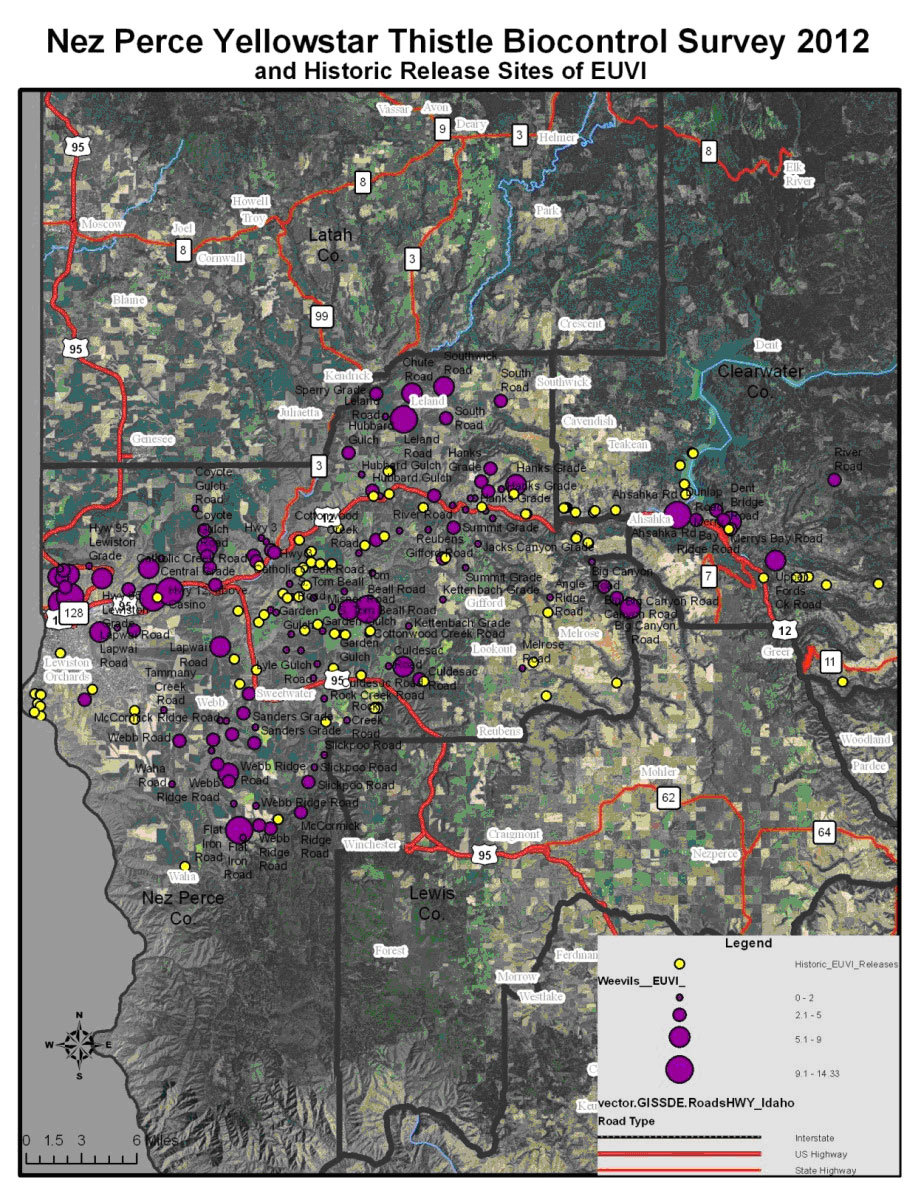
Partners and Funding
The District works closely with the Nez Perce Bio-Control Center to coordinate release site locations and obtain staff training. In addition, release site locations are transmitted to the Nez Perce Bio-Control Center as part of a regional database.
This project was funded through the Bonneville Power Administration’s Fish and Wildlife program and the Idaho State Department of Agriculture’s Noxious Weed Program. The Bonneville Power Administration provides funding to the District for steelhead habitat restoration. The bio-control releases are a component of the Lapwai Creek restoration plan’s objective of reducing noxious weeds within the watershed. The Idaho State Department of Agriculture’s Noxious Weed program funds are prioritized through the Clearwater Basin Cooperative Weed Management Area.
2018 Activities
2,000 insects were released at ten sites within the county. The 2018 releases are estimated to impact 50 acres of yellow star thistle. Figure 6 illustrates the 2018 release locations.
Bio-Control Summary of Activities - 2018
Figure 6. 2018 Yellow Starthistle Releases.
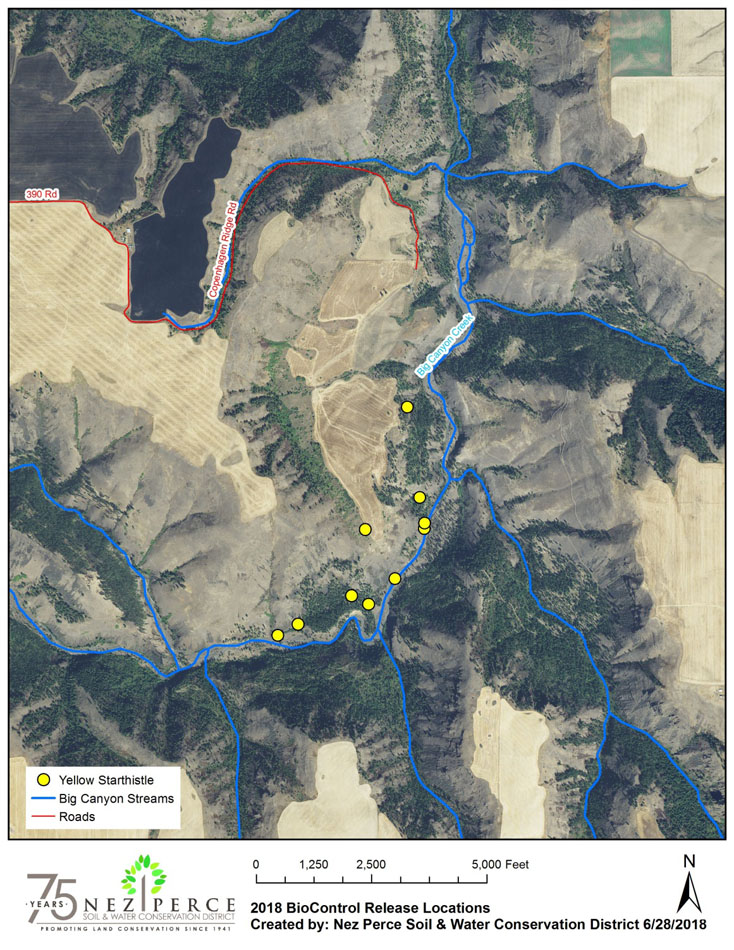
2014 Activities
71,500 insects were released at five sites within the county. The 2014 releases are estimated to impact 25 acres of yellow star thistle. Figure 5 illustrates the 2014 release locations.
Bio-Control Summary of Activities - 2014
Figure 5. 2014 Yellow Starthistle Releases.
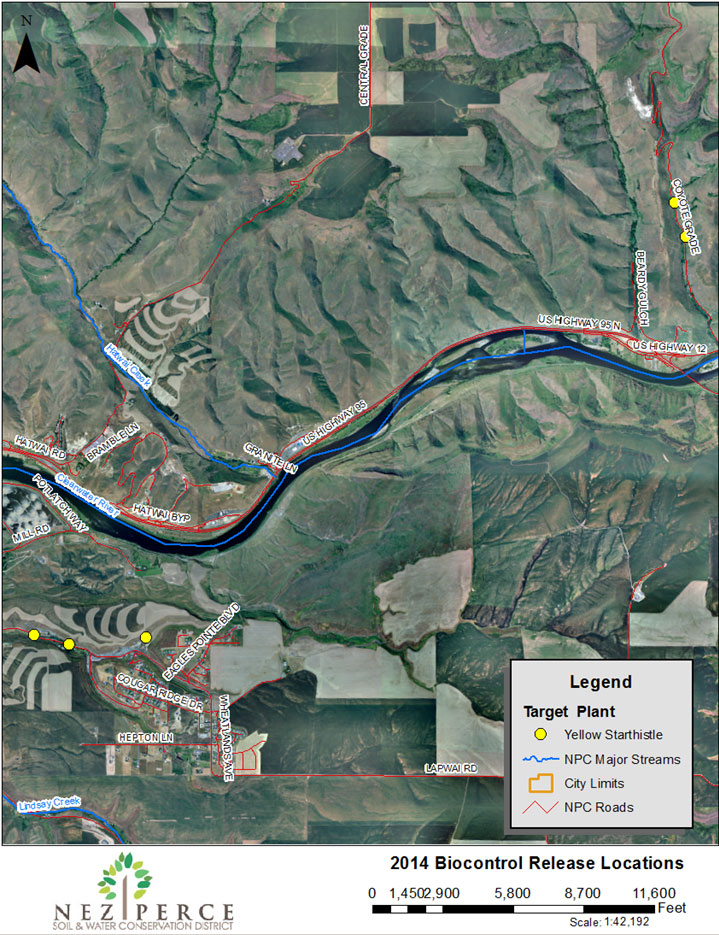
2013 Activities
700 insects were released at seven sites within the county. The 2013 releases are estimated to impact 35 acres of yellow star thistle. Figure 3 illustrates the 2013 release locations.
Bio-Control Summary of Activities - 2013
Figure 4. 2013 Yellow Starthistle Releases.
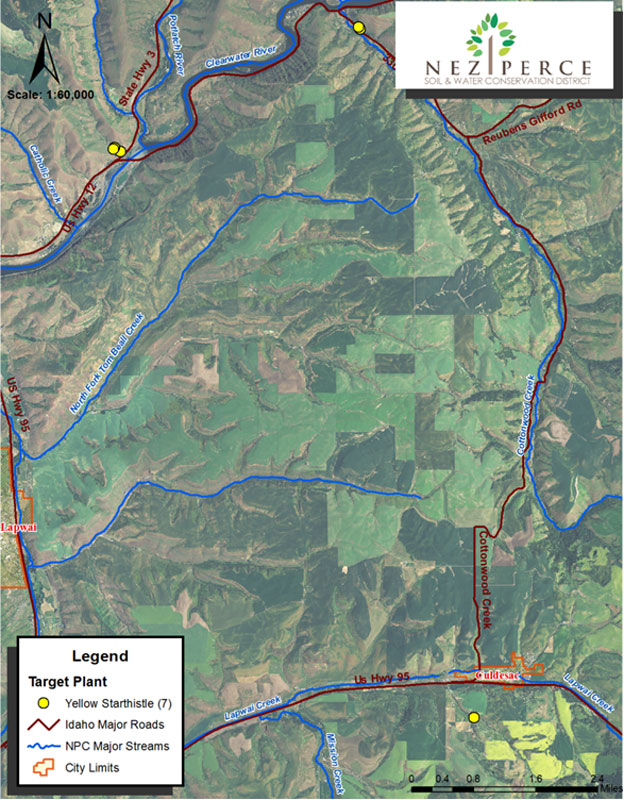
2012 Activities
1,050 insects were released at seven sites within the county. The 2012 releases are estimated to impact 35 acres of yellow star thistle. Figure 2 illustrates the 2012 release locations. Yellow Starthistle Bio-Control Summary of Activities - 2012
